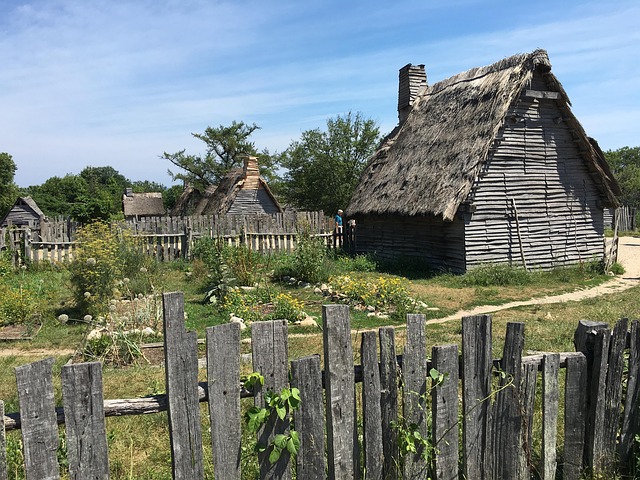Lane County, Oregon's history is defined by 19th-century homesteading, shaped by pioneer families seeking self-sufficiency and community in a rugged landscape. Native American knowledge guided early settlers to fertile valleys, fostering cultural exchange integral to the county's agricultural heritage. Federal Land Grants and Homestead Acts attracted diverse individuals, offering land ownership opportunities to former slaves and immigrants. Pioneer families transformed wilderness into farms and ranches, built communities, and left an enduring legacy of resilience and hard work. Local initiatives preserve this history through historical sites, museums, and cultural events, honoring the county's homesteading roots.
“Discover the rich history of Lane County, Oregon, and its early settlers in this comprehensive guide. From the first explorers’ ventures into the region to the establishment of thriving communities, we explore the unique settlement patterns that defined Lane County. Learn about the intricate relationship between Native American tribes and the incoming homesteaders, and how federal land policies shaped the county.
Dive into the stories of pioneer families who left their mark, as well as the challenges they overcame. Find out how their legacy continues to be celebrated through current historical preservation efforts, showcasing the enduring spirit of Lane County homesteading.”
- Early Exploration and Settlement Patterns in Lane County
- The Role of Native American Tribes in Homesteading
- Federal Land Grants and Homestead Acts Impact
- Pioneer Families and Their Contributions to the Region
- Challenges Faced by Early Settlers in Lane County
- Legacy and Historical Preservation Efforts Today
Early Exploration and Settlement Patterns in Lane County

The early exploration and settlement patterns of Lane County, Oregon, are a fascinating chapter in the history of the American West. The region’s allure drew pioneers seeking fertile land and opportunities during the mid-19th century. Homesteading became a cornerstone of this period, with families venturing into the unknown to claim their piece of the Oregon Trail legacy.
Settlers were captivated by the county’s diverse landscapes, from lush forests to rolling hills and the scenic Pacific coastline. They established communities along river valleys, taking advantage of the abundant water sources for agriculture and trade. The settlement patterns reflected a desire for self-sufficiency and community building, with neighbors supporting one another in the face of the region’s challenges, including harsh winters and uncharted territories.
The Role of Native American Tribes in Homesteading

The early history of Lane County, Oregon, is intertwined with the presence and influence of Native American tribes who had long inhabited the region. As European settlers began to arrive in the mid-19th century, they found a landscape already shaped by indigenous communities, whose knowledge of the land played a pivotal role in the subsequent homesteading process. Native Americans were instrumental in guiding early settlers to fertile valleys, teaching them about sustainable farming practices, and sharing their deep understanding of local ecosystems and resources.
This cultural exchange was crucial in shaping the success of Lane County’s homesteaders. Many settlers relied on these shared skills and knowledge to establish themselves in this new environment. The interaction between Native Americans and settlers paved the way for a unique blend of traditions and practices, contributing significantly to the diverse agricultural heritage that remains a part of Lane County’s identity today.
Federal Land Grants and Homestead Acts Impact

The history of Lane County, Oregon, is intricately woven with the stories of its early settlers who were drawn to its fertile lands and breathtaking landscapes. The Federal Land Grants and Homestead Acts played a pivotal role in shaping this region, offering former slaves and new immigrants opportunities to secure their own plots of land through the process of homesteading. This period witnessed a surge of individuals from diverse backgrounds flocking to Lane County, eager to establish roots and build communities.
The Homestead Acts, enacted by the U.S. Congress in the 19th century, encouraged settlement west of the Mississippi River. In Oregon, including Lane County, these laws allowed settlers to claim up to 640 acres of public land as long as they resided on and cultivated it for a set period. This initiative significantly impacted the region’s development, fostering a sense of ownership and community among the pioneers who shaped the county’s identity. Through hard work and determination, many families carved out farms and ranches, contributing to the rich agricultural heritage that remains a cornerstone of Lane County’s culture and economy even today.
Pioneer Families and Their Contributions to the Region

Pioneer families played a pivotal role in shaping Lane County, Oregon’s rich history and landscape. These brave settlers, drawn by the promise of fertile land and a new beginning, embarked on arduous journeys to claim their piece of the American frontier. They established homesteads, clearing forests and cultivating fields, thereby transforming the untamed wilderness into productive farms and ranches. The contributions of these pioneer families extended beyond agriculture; they built communities, established schools, and laid the foundations for the vibrant region we know today.
Each family brought unique skills and resilience, fostering a spirit of cooperation and innovation. Women, in particular, shouldered significant responsibilities, managing households, tending to crops, and often working side-by-side with their husbands. Through their labor and dedication, they ensured the survival and prosperity of their communities. The legacy of these pioneer families endures, etched into the very fabric of Lane County’s identity as a place where resilience, hard work, and a spirit of adventure continue to thrive.
Challenges Faced by Early Settlers in Lane County

The early settlers of Lane County, Oregon, encountered numerous challenges as they ventured into uncharted territory. Homesteading in this region presented a unique set of obstacles due to the diverse and often harsh environment. The county’s geography, characterized by dense forests, rugged mountains, and fertile valleys, demanded significant effort to clear land for agriculture. Settlers had to navigate through these natural barriers, utilizing their skills and resilience to establish sustainable livelihoods.
Additionally, the region’s remote location made accessing essential resources and supplies a constant struggle. Isolation often meant that settlers were dependent on their own ingenuity and community support for survival. They faced harsh winters, unpredictable weather patterns, and frequent outbreaks of disease, testing their endurance and determination. Despite these challenges, the early settlers’ perseverance played a pivotal role in shaping Lane County’s history and contributing to its eventual prosperity.
Legacy and Historical Preservation Efforts Today

The legacy of Lane County’s first settlers continues to shape the region today, evident in the dedicated efforts to preserve and honor the county’s rich history. Local communities have embarked on initiatives to safeguard the stories and traditions of these pioneering homesteaders, ensuring their contributions remain an integral part of Oregon’s narrative. Through historical societies, museums, and cultural events, the spirit of early settlers is kept alive.
These preservation efforts extend to the protection of historic sites, including well-preserved farms and log cabins that offer a glimpse into the past. The focus on Lane County homesteading ensures that the challenges, triumphs, and everyday lives of these settlers are not forgotten. By preserving their legacy, the community fosters a deeper connection to the land and celebrates the resilience that has shaped the county’s identity over generations.
